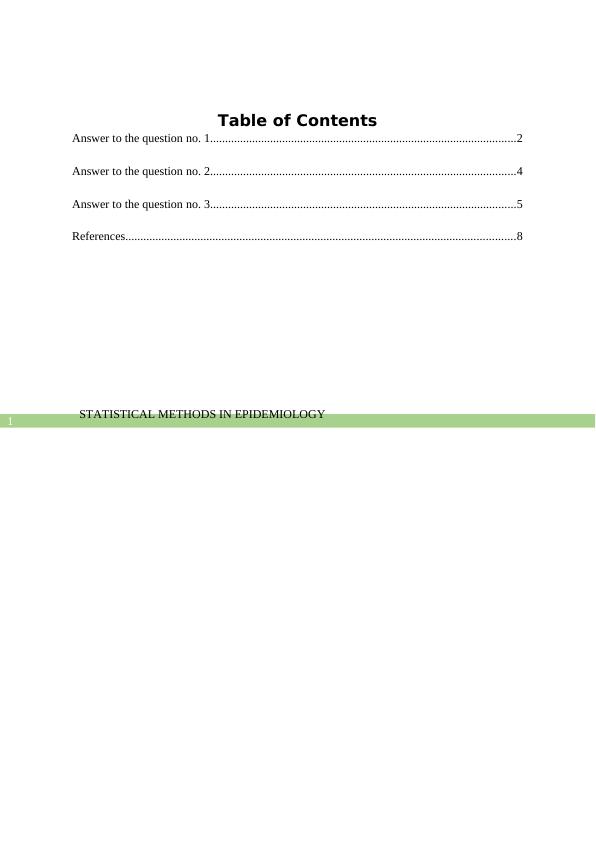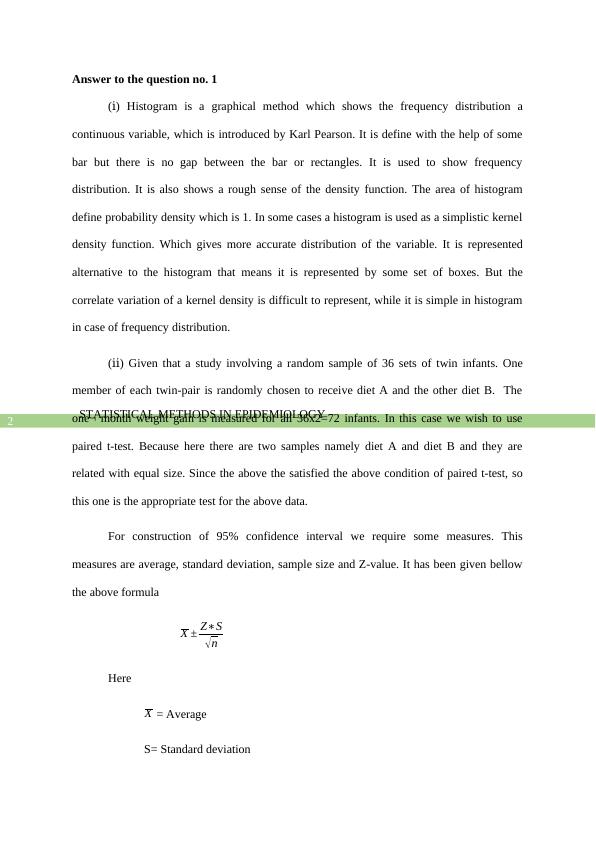Statistical Methods in Epidemiology
9 Pages1751 Words31 Views
Added on 2022-12-30
About This Document
This document provides an overview of statistical methods in epidemiology. It covers topics such as histograms, paired t-tests, confounding, effect modification, and odds ratio. The document also includes examples and explanations to help readers understand these concepts.
Statistical Methods in Epidemiology
Added on 2022-12-30
ShareRelated Documents
End of preview
Want to access all the pages? Upload your documents or become a member.
Statistical Methods in Epidemiology Assignment
|6
|805
|283
Statistical Methods in Epidemiology (401176)
|4
|1347
|268
Business Statistics: Hypothesis Testing
|9
|1209
|285
ECON1095 Quantitative Methods In Finance
|13
|925
|171
Hypothesis and Sampling
|12
|775
|479
Types of Probability Assigning Methods
|12
|1926
|91



